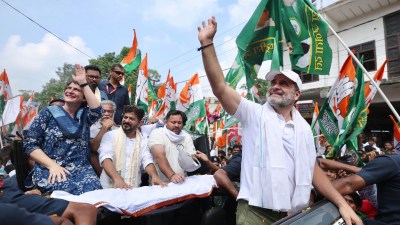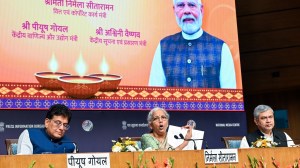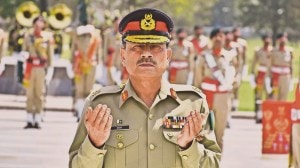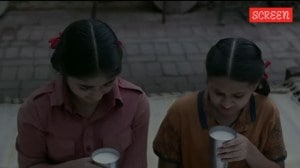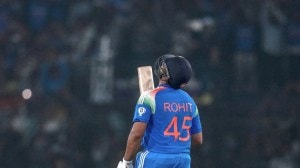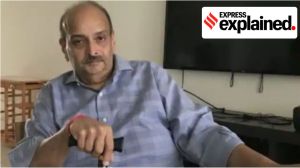Doctoring the Doaba
A signboard near a tubewell takes you down a road wedged between emerald fields of wheat. And then, in a sudden turn from nature’s boun...

 A signboard near a tubewell takes you down a road wedged between emerald fields of wheat. And then, in a sudden turn from nature’s bounty, you see it: an imposing building in the midst of nowhere.
A signboard near a tubewell takes you down a road wedged between emerald fields of wheat. And then, in a sudden turn from nature’s bounty, you see it: an imposing building in the midst of nowhere.
Welcome to Guru Nanak Dev Mission Charitable Hospital in Pasla village of Jalandhar. It’s one of the three NRI-built hospitals in a radius of 10 km, a healthy indicator of the contribution made by non-resident Indians to Punjab’s social welfare sector.
Surveys by the Jalandhar-based Non Resident Indian Sabha show a NRI investment in charity (gurdwaras, hospitals and educational institutes) close to about Rs 45 crore in each of the 30 blocks (and every block comprises 90-odd villages) of Punjab’s Doaba region, known for its imports like Ujjal Dosanjh, the senior Canadian politician.
NRI investment in Punjab is not a recent phenomenon. What’s new is its focus on hospitals. ‘‘First, they used to shower money on gurdwaras, then they began to take interest in educational institutions, now it’s the turn of hospitals,’’ says Avtar Singh Channa, a founding member of the NRI Sabha.
THE proof is strewn all over the countryside. Down the GT Road to Phagwara you can spot a mammoth peach-coloured building, the Guru Nanak Mission Hospital at Dhahan Kaleran. The 250-bed multi-specialty hospital, provides rural patients state-of-the-art healthcare.
The trust that runs it also manages a nursing college affiliated to the University of British Columbia, Canada, a senior secondary school and a de-addiction centre. ‘‘We’ll soon start a 500-seat medical college as well,’’ says the wizened Budh Singh Dhahan, the driving force behind the hospital.
| NRI investment in charitable institutes in the four Doaba districts in Punjab: Rs 1,350 crore. About 60 per cent of the money is for gurdwaras. The rest goes to educational institutes and hospitals |
A businessman in the United Kingdom, Budh Singh says he’s merely realising a dream that all Punjabi NRIs have for the state: ‘‘Good health and education, that’s all.’’ To take the dream further, Budh Singh has also brought in doctors from the North American Sikh Medical and Dental Association. Were it not for his fund-raising abilities, the hospital, which incurs a loss of Rs 40 lakh a year, would have shut years ago.
BUT the charity at home has come with its problems. For one, hospitals are incurring losses. At the Pasla hospital, for instance, you pay Rs 5 for registration slip, Rs 50 for an X-ray and Rs 150 for an ultrasound. Laparoscopy to remove kidney stones cost only Rs 4,000; elsewhere in Jalandhar it could set you back by Rs 12,000. Medicines too are heavily subsidised.
Apart from the subsidy burden, poor management and inappropriate location are also responsible for the losses. Madhu C Deodhar, former medical superintendent and head of the Department of Surgery at Christian Medical College, Ludhiana, sums up the problem: ‘‘Most often, a hospital is built on a donated piece of land with scant regard for the logistics. And run by local trustees who have little knowledge of medical care.’’
THE 80-bed hospital at Raja Sahib Da Majra village near Banga is a case in point. In the swanky building raised at Rs 10 crore, only the OPD is functional; the beds have never been occupied.
The trustees, all residents of the village, are busy brainstorming with Dr Deodhar. ‘‘Money is no problem, we can always dig into the funds of the gurdwara if we need more,’’ says Gurcharan Singh, who heads both the Trust as well as the neighbouring gurdwara. Good doctors, he agrees, are hard to come by in villages; right now, the hospital only has four.
What he glosses over is the poor remuneration paid to doctors. Dr Vijay Kumar, who’s been working here for the past four years, takes home Rs 8,400 a month. In a city, he could have made at least double that amount.
‘‘I wasn’t a good administrator; besides doctors too are not keen to come here,’’ confesses Gyan.
Unhealthy competition
OVERCROWDING is another cause for worry — not a crowd of patients, but a crowd of hospitals. NRIs in neighbouring villages have set up two hospitals. ‘‘They will naturally dip into our pool of patients,’’ says Jagwinder Singh.
The spanking new Bhai Sadhu Singh Charitable Hospital at Rurka Kalan has come up barely four kilometres away. The neighbouring Bilga village, is also building a grand 200-plus bed hospital.
But the hurdles are not keeping NRIs away. Dr J K Sidhu opened the Sardar Kapoor Singh Charitable Hospital at Aur in 1959. A stately lady with a clipped accent, she, along with her sister, comes from Vancouver every winter to fulfill the promise she made to her late parents. They’ve kept their word for the past 45 years.
In the end, it’s the hope that they have brought to these villagers that’s keeping the investment in health in Punjab high. As Kulwant Singh Sandhu of Rurka Kalan puts it: ‘‘It’s turning into a competition between villages. From focusing on their houses, the NRIs have now turned their attention to raising the standard of the village.’’
With inputs from



- 01
- 02
- 03
- 04
- 05


